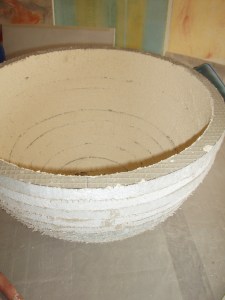I recently completed a large project for a private home in London in which I applied Keim paints to the walls. I have been meaning to introduce these paints into my interiors for a while, and now that it’s been done there’s no turning back!
Keim mineral paints are natural, non-toxic, non-flammable and completely odourless. They are made from natural minerals, water glass (potassium silicate), and earth oxide pigments. Unlike conventional acrylic paints, they do not contain any VOCs (Volatile Organic Compounds), solvents or petrochemicals. This means they do not release any fumes into the atmosphere, making them perfect for people with allergies, children, and of course the environment.
I was requested to come up with a colour scheme for this north-facing period Victorian room; my client complained that it lacked character, and felt dark and gloomy. They asked me to make the room lighter and more welcoming, with a sense of warmth— without using creams, yellows, and oranges as these have already been used throughout their property.
One of the main features of the room is the beautiful original marble fireplace, so this was my point de départ. By picking out the colours of the marble veins— grey and a warm cream— I was able to bring the room together as a whole.
Additionally, the picture rail had previously stuck out like a sore thumb, visually it was the focus of the room and created an aggressive division.
I solved this by painting the ceilng down to the picture rail, including the ornate cornice, a slight off-white. I personally never use pure white on the ceiling, I always break it with a drop of colourant to make it less harsh. This immediately makes the room larger and brighter. The picture rail together with all the woodwork was painted in oil-based satin, pure white. In doing so, the division is much more subtle and pleasing to the eye.
The contrast between the grey and cream gives the room a dynamic, contemporary feel, whilst retaining the period character. These two colours also happen to be best suited to the direction of the room by the principles of Feng Shui.
The finished room is a peaceful, elegant, and inviting place and I hope my clients enjoy it for many years to come.
















































































































